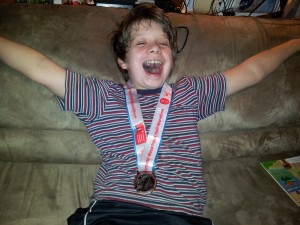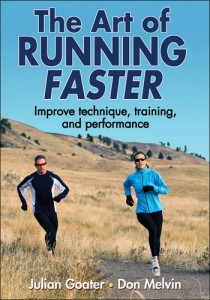With the Goodlife Toronto Half-Marathon eleven days in the past, my period of sitting on the couch doing sweet eff-all post-race recovery is over. I had a harder time than usual with my recovery, because I wasn’t in top form on the day, and all of the downhill running killed my quads. For four days, I couldn’t walk down stairs without whining like a little girl.
I finally laced up my running shoes again on Tuesday. In a rare departure from the norm, I was actually in the mood for the treadmill at the gym. Tuesday was a rough day – it was the first anniversary of the death of Fran, one of my best friends – and I went through the day in a state of emotional upheaval. I needed the noise and busy-ness of the gym.
I hammered out a fast 5K or so on the treadmill, and it felt surprisingly good, physically and mentally. The exercise helped clear my head, and doing a fast workout with high leg turnover loosened up my muscles. I was back in the groove – or so I thought.
I woke up yesterday morning with pain in my left Achilles tendon. It eased up throughout the morning, but when I tried to walk from my house to the bus stop down the road, I discovered that all I was capable of was a hobble. As I went about my business for the afternoon, things loosened up and I felt OK, but from time to time I’d feel that Achilles tendon nagging at me.
I came home and iced it, and resolved to rest for at least two days. The last thing I want, as I head into the next phase of my training, is a torn Achilles tendon. The next phase of my training is going to be very intensive as I work on both speed and mileage, and I need to be in the best form possible. I don’t have time to be messing around with injuries, so I’d rather just rest up properly now instead of letting things get worse.
While I’m resting, I will be planning out the training schedule that will get me from here to my Big Race of the season: the Scotiabank Toronto Waterfront half-marathon on October 19th. My calendar this year includes a distance that I have not attempted before – 30K – but my ultimate goal is to get a personal best time at the Scotiabank half-marathon. That is my autism run, my opportunity to do my small part in making the world a better place for my son and other kids with autism. All of the other races throughout the summer are training runs to prepare me for the big event. It is on October 19th that I really want to shine.
So here I sit, with ice wrapped around my ankle and a calendar in front of me, figuring out a schedule that will help me go further and faster. I will also be searching for ways to fuel my body better, and that quest will include a mission to find a healthy cheesecake recipe. Because – you know – cheesecake.
What are your health and fitness goals for the summer? If you’re a runner, what is your “A” race this season? And do you have any healthy cheesecake recipes?
This is an original post by Kirsten Doyle. Photo credit to the author.











